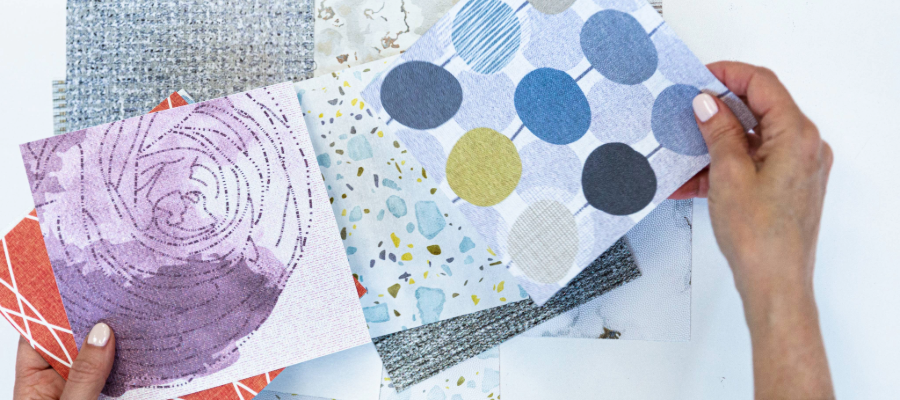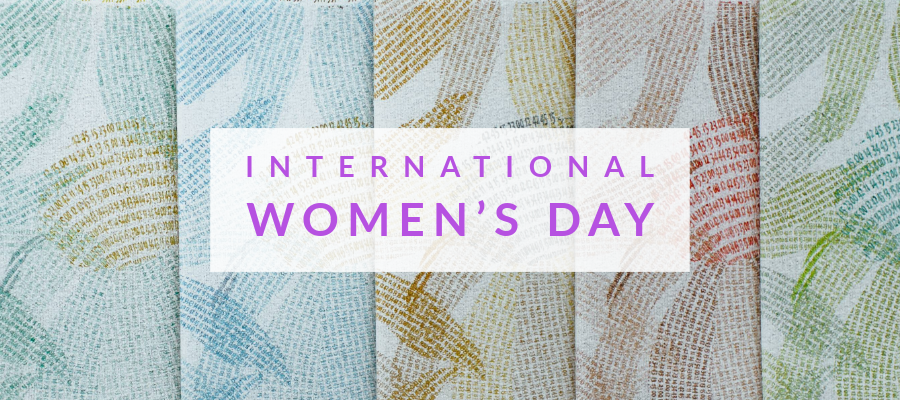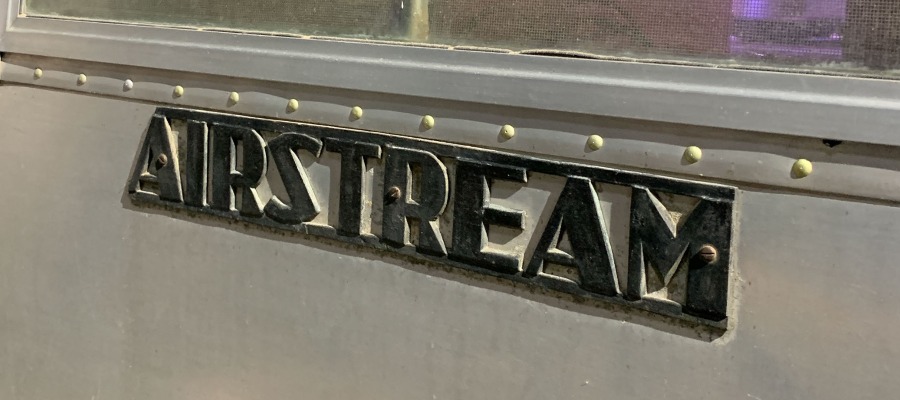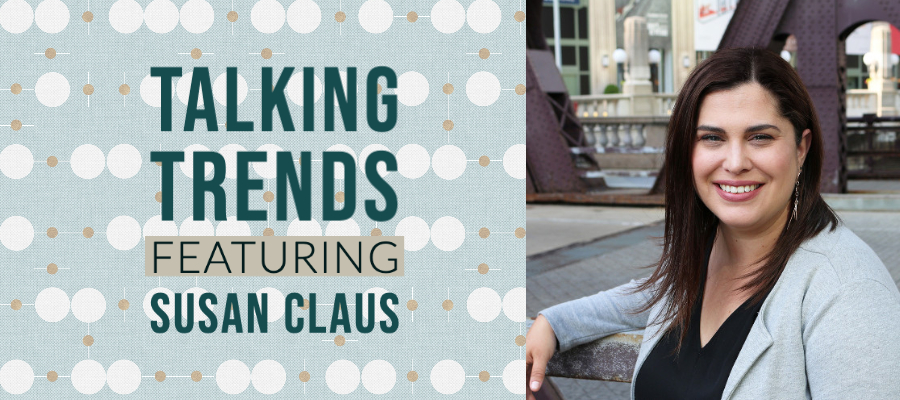
Susan Claus of VividBoard Is Talking Trends
At Design Pool, we’re a little obsessed with trends. It’s why we send out a monthly trend letter and started this talking trends series. For our entire career, trends evolved in a recognizable cycle. But, like everything else, that’s not the case in 2020. Trends that had been developing for years stopped in their tracks. (Or did they just pause?) This is what makes these trend conversations so fascinating. Companies and design departments traditionally plan their work months, if not years, in advance. Just as restaurants and retail stores have pivoted quickly, so has manufacturing. When we spoke with Susan Claus, Senior Marketing Manager for VividBoard, a GMi company, she had just recently returned to her Ohio office. But before talking trends, she began by discussing her own company’s pivot.
At first, parent company GMi Companies, visual Communication experts, quickly started manufacturing personal protective equipment such as sneeze guards and divider panels for physical separation to companies and schools transitioning back to work. While this production change was an immediate relief for the company and staff, not to mention essential workers, they’re wondering what comes next. This is in large part because their customers have also pivoted abruptly and their needs have changed suddenly. Susan pointed out that entire businesses and industries have switched gears. The trends they were designing for aren’t necessarily important right now. As people start to return to the office, their primary focus is on how to keep their staff healthy and safe. If their employees don’t feel comfortable, they won’t come back to work, let alone do their best work.
What does this adaptation mean for the open office trend?
A lot of architects and interior designers are wondering if the COVID pandemic will be the death of the open office. It’s possible. Susan Claus already sees a shift away from completely open offices. Employees perceive an open office, with limited separation, as risky. However, she doubts the open concept will go away completely. Instead, she believes offices will be designed with the ability for third spaces to be hackable as part of the original idea. Open spaces have many benefits but will need flexibility to allow for distance if needed suddenly. Will partition extenders be permanent fixtures in offices? No one knows for sure, but the ability to add or remove them quickly is likely here to stay.
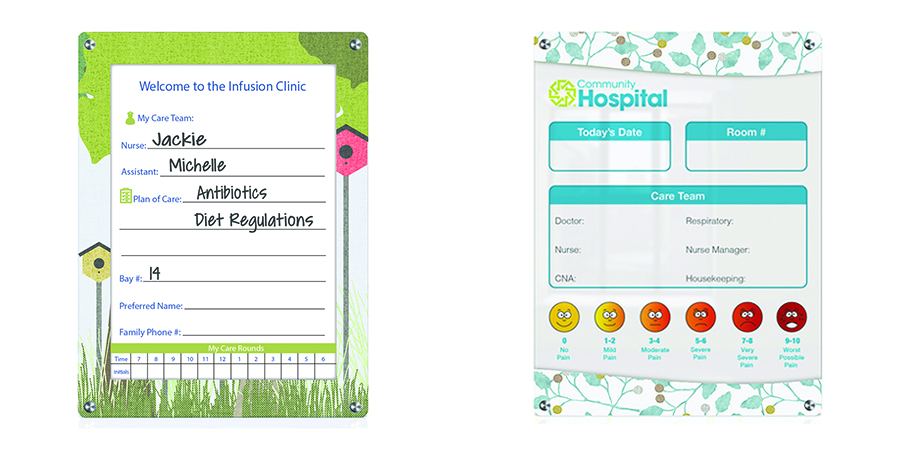
Of course, that’s assuming people return to an office at all.
Work from home life was an experiment thrown at all of us, and companies and their employees are learning a lot from this experiment. In some cases, companies are closing offices entirely. Others are allowing employees to decide for themselves where and how they do their best work. Susan sees many people continuing to work from home and, as a result making their workspace more permanent. Vividboard sees more and more people receiving a stipend from their companies to outfit their home spaces with the tools they use and love in their office, such as their dry erase whiteboards. If people have the tools they need at home, they’ll be more productive.
In addition to adaptability, cleanability is another sudden concern. Vividboard is a healthcare focused brand, creating customized whiteboards for patient rooms within healthcare facilities. Hospitals, in particular, are especially concerned with cleanability. Everything in a healthcare setting needs to be disinfected with chemicals like bleach and VIREX, and just as importantly, easy to clean on an ongoing basis by not having hard to reach places or components. Nurses, doctors, and caregivers can’t waste time dealing with problem products, nor can cleaning staff spend unnecessary time with a hard-to-clean product.
One trend that Susan Claus has not seen change is focusing on patient experience when designing healthcare spaces.
Studies have shown that soothing colors and art in patient rooms help with the healing process. Hospital stays can be far less stressful for patients and their family when the hospital staff communicate effectively with them. That’s why VividBoard is so effective and growing in popularity. Susan sees this trend toward customizing only continuing to grow. Custom patient room boards are so well suited to customization partly because clients need a product that blends seamlessly into a hospital’s décor and branding. Each facility is unique in look but also in the specific language they use internally. A customized board assures that all communication is consistent, clear, and concise. Healthcare workers understand that an integral part of patient care is to communicate with the patient and not just to each other. When patients and their families understand their care, they are less anxious, follow instructions more closely, and heal faster. All this is evident in the fact that facilities improve their HCAHPS scores by up to 6 points by using custom whiteboards.
The trend toward customization is getting easier and more accessible. Interior designers are embracing this technology and making their spaces exactly what their client needs.
VividBoard has just launched a new CEU titled HCAHPS: What Does It Mean & Its Role in Patient Communication & Design. For more information on attending a virtual presentation, visit their website to request a time.
Special thank you to Susan for taking the time to talk with us about trends!
Share this post
Author
DESIGN/COLOR TRENDS AND AWESOME INFORMATION IN YOUR INBOX
Sign up for our monthly trend letter





